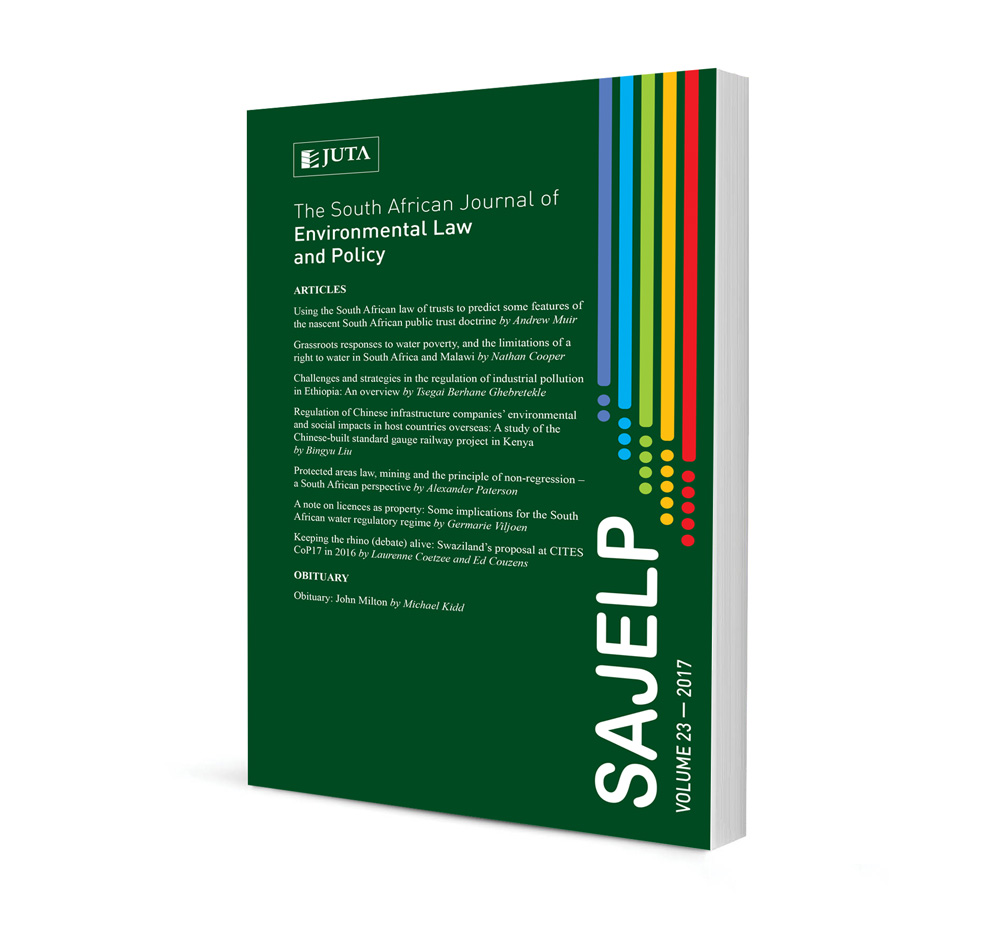A note on licences as property: Some implications for the South African water regulatory regime

A note on licences as property: Some implications for the South African water regulatory regime
Authors Germarié Viljoen
ISSN: 2616-8499
Affiliations: Senior Lecturer in Law, North West University
Source: South African Journal of Environmental Law and Policy 2017, p. 195 – 216
Abstract
A completely new water law dispensation, amounting to a regime change, was introduced with the National Water Act 36 of 1998. With the legal transformation, the traditional exclusive private law ownership-object approach to water resources evolved into a rights-based approach. As South Africa is regarded as one of the most water scarce countries in the world, where water restrictions are being imposed on inter alia farmers and industries due to the lingering drought, the importance of investigating the nature of water use rights within the new water regulatory regime is self-evident. This article seeks to determine whether the regulatory regime for the sale of liquor in the Eastern Cape, as deliberated upon in Shoprite Checkers (Pty) Limited v Member of the Executive Council for Economic Development, Environmental Affairs and Tourism 2015 (6) SA 125 (CC), may provide insight into implications for licence holders in the new water regulatory regime of South Africa.